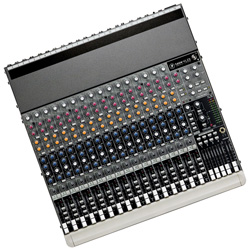One of the features often found on the rear panel of a mixing console is the channel insert. The insert serves simultaneously as both an input and an output for either a single channel or for some other signal path, such as a submix or main output bus.
It is a point in the signal path at which the signal can be detoured — sent out of the mixer — and then returned to its normally scheduled programming, creating what is called an effects loop. In other words, it allows you to “insert” an outboard device into the signal path.
On many mixers, a single 1/4-inch three-conductor jack provides connections for both an input and an output. What would you do with such a strange jack?
1. Apply effects to a channel or submix. Because an insert is both an input and an output, you can route the signal from the channel out to a reverb, compressor, limiter, etc., and then back into the channel. You might send the signal to a noise gate to automatically “turn off” a mic when it’s not in use.
Reducing the number of mics that are on, or “open”, reduces the risk of feedback and improves your signal-to-noise ratio.
2. Use it as a direct output, like a post-mic preamp, but pre low-cut filter, mute, EQ, fader, etc. Just because you’re sending something out doesn’t mean you have to bring it back. You can use each insert to send a “direct out” signal to a line-level input of a tape recorder, or to another mixer for a broadcast or recording feed.
At the mixer end of your direct out cable, you’ll want a standard 1/4-inch mono (or TS, tip/sleeve) phone plug. Push the phone plug part way into the insert jack, just to the first click. This will route the direct out signal via the cable, without interrupting the signal flow in the mixer.
If you insert the plug all the way to the second click, you will still get a direct out signal, but the signal in the channel will be interrupted at that point — removed from the mix.
3. Insert a signal through a “Y” cable — using the insert as both a direct out and an effects loop. As an alternate approach, create your effects loop as described earlier, then insert a “Y” adapter after the processor to affect (compress, for example) both the direct out and the individual channel in the mix.
A good application for this might be to compress a pastor’s lapel mic or a pulpit mic, in both the house mix and a recording or broadcast.
Whether you use them as part of your normal setup every week, or just to solve an occasional routing problem, inserts add tremendously to the versatility of your mixing console.
Article provided by Mackie.





















